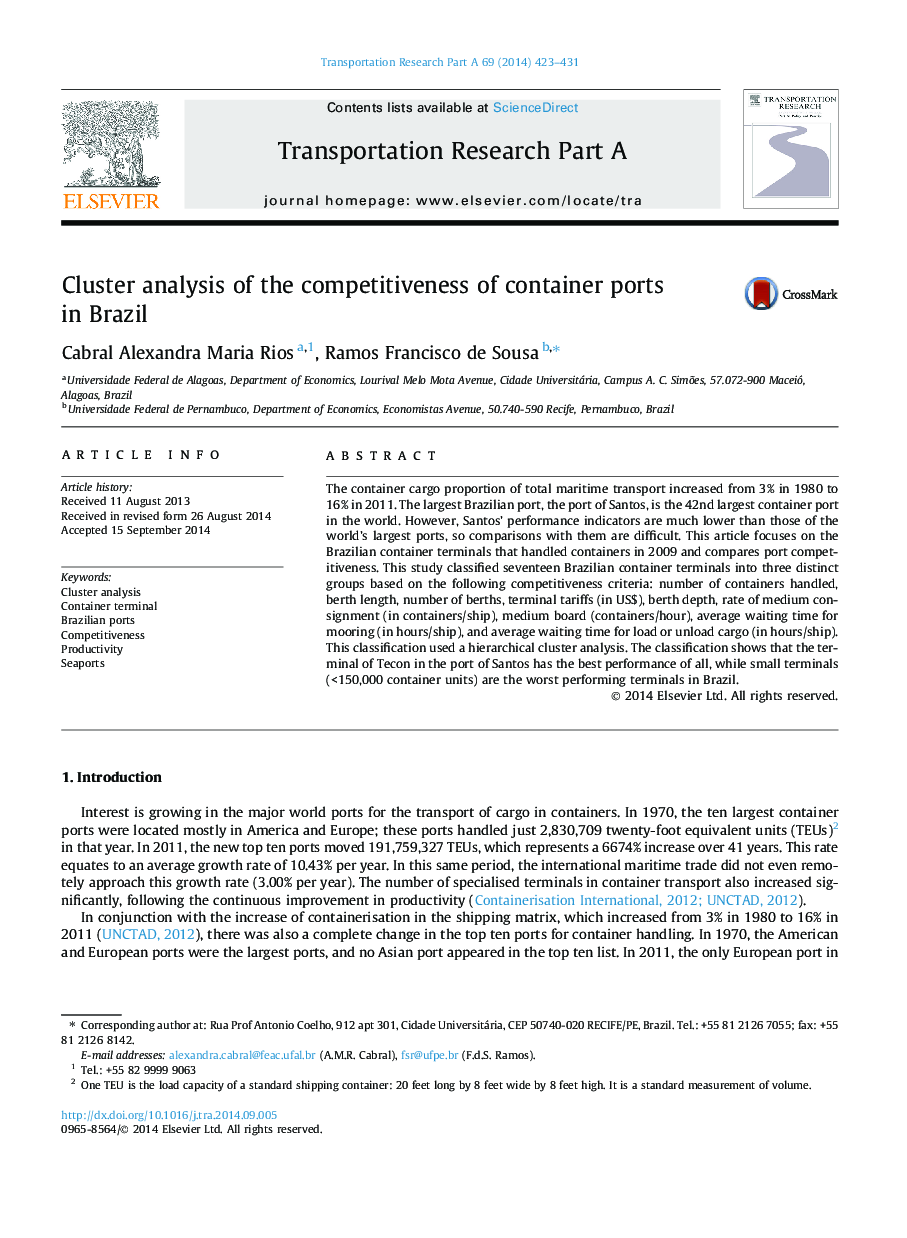| Article ID | Journal | Published Year | Pages | File Type |
|---|---|---|---|---|
| 6781590 | Transportation Research Part A: Policy and Practice | 2014 | 9 Pages |
Abstract
The container cargo proportion of total maritime transport increased from 3% in 1980 to 16% in 2011. The largest Brazilian port, the port of Santos, is the 42nd largest container port in the world. However, Santos' performance indicators are much lower than those of the world's largest ports, so comparisons with them are difficult. This article focuses on the Brazilian container terminals that handled containers in 2009 and compares port competitiveness. This study classified seventeen Brazilian container terminals into three distinct groups based on the following competitiveness criteria: number of containers handled, berth length, number of berths, terminal tariffs (in US$), berth depth, rate of medium consignment (in containers/ship), medium board (containers/hour), average waiting time for mooring (in hours/ship), and average waiting time for load or unload cargo (in hours/ship). This classification used a hierarchical cluster analysis. The classification shows that the terminal of Tecon in the port of Santos has the best performance of all, while small terminals (<150,000 container units) are the worst performing terminals in Brazil.
Related Topics
Physical Sciences and Engineering
Engineering
Civil and Structural Engineering
Authors
Cabral Alexandra Maria Rios, Ramos Francisco de Sousa,
